
Josiah Wedgwood was an English potter, entrepreneur and abolitionist. Founding the Wedgwood company in 1759, he developed improved pottery bodies by systematic experimentation, and was the leader in the industrialisation of the manufacture of European pottery.

John James Audubon was a French-American self-trained artist, naturalist, and ornithologist. His combined interests in art and ornithology turned into a plan to make a complete pictorial record of all the bird species of North America. He was notable for his extensive studies documenting all types of American birds and for his detailed illustrations, which depicted the birds in their natural habitats. His major work, a color-plate book titled The Birds of America (1827–1839), is considered one of the finest ornithological works ever completed. Audubon is also known for identifying 25 new species. He is the eponym of the National Audubon Society, and his name adorns a large number of towns, neighborhoods, and streets across the United States. Dozens of scientific names first published by Audubon are still in use by the scientific community.
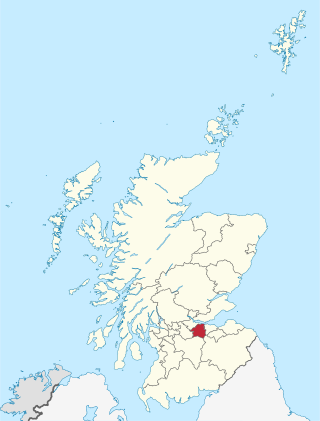
West Lothian is one of the 32 council areas of Scotland, and was one of its historic counties. The county was called Linlithgowshire until 1925. The historic county was bounded geographically by the Avon to the west and the Almond to the east. The modern council area occupies a larger area than the historic county. It was reshaped following local government reforms in 1975: some areas in the west were transferred to Falkirk; some areas in the east were transferred to Edinburgh; and some areas that had formerly been part of Midlothian were added to West Lothian.
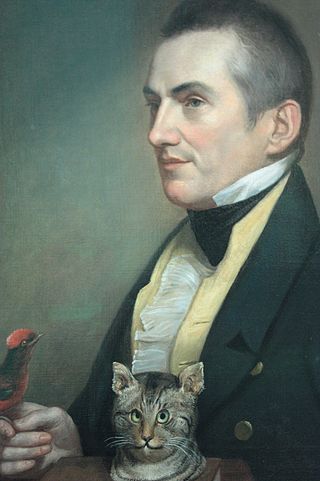
Charles Waterton was an English naturalist, plantation overseer and explorer best known for his pioneering work regarding conservation.

Henry Dundas, 1st Viscount Melville, PC, FRSE, styled as Lord Melville from 1802, was the trusted lieutenant of British prime minister William Pitt and the most powerful politician in Scotland in the late 18th century.
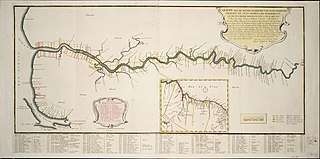
Demerara is a historical region in the Guianas, on the north coast of South America, now part of the country of Guyana. It was a colony of the Dutch West India Company between 1745 and 1792 and a colony of the Dutch state from 1792 until 1815. It was merged with Essequibo in 1812 by the British who took control. It formally became a British colony in 1815 until Demerara-Essequibo was merged with Berbice to form the colony of British Guiana in 1831. In 1838, it became a county of British Guiana until 1958. In 1966, British Guiana gained independence as Guyana and in 1970 it became a republic as the Co-operative Republic of Guyana. It was located around the lower course of the Demerara River, and its main settlement was Georgetown.

Bathgate is a town in West Lothian, Scotland, 5 miles (8 km) west of Livingston and adjacent to the M8 motorway. Nearby towns are Armadale, Blackburn, Linlithgow, Livingston, West Calder and Whitburn. Situated 2 miles (3 km) south of the ancient Neolithic burial site at Cairnpapple Hill, Bathgate and the surrounding area show signs of habitation since about 3500 BC and the world's oldest known reptile fossil has been found in the town. By the 12th century, Bathgate was a small settlement, with a church at Kirkton and a castle south of the present day town centre. Local mines were established in the 17th century but the town remained small in size until the coming of the industrial revolution. By the Victorian era, Bathgate grew in prominence as an industrial and mining centre, principally associated with the coal and shale oil industries. By the early 20th century, much of the mining and heavy industry around the town had ceased and the town developed manufacturing industries, principally in vehicle production and later electronics before these factories closed in the late 20th century. Today Bathgate is the second largest town in West Lothian, after Livingston and serves as a regional commuter town within the Scottish Central Belt.
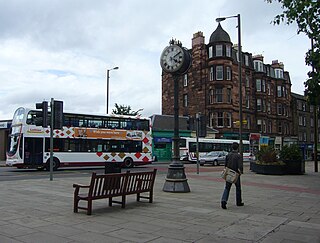
Morningside is a district and former village in the south of Edinburgh, Scotland. It lies alongside the main arterial Morningside Road, part of an ancient route from Edinburgh to the south west of Scotland. The original village served several farms and estates in the area. In the 19th century, it developed as a residential suburb, its growth being stimulated by the arrival of a railway service and other transport improvements.
Charles Darwin's education gave him a foundation in the doctrine of Creation prevalent throughout the Western world at the time, as well as knowledge of medicine and theology. More significantly, it led to his interest in natural history, which culminated in his taking part in the second voyage of HMS Beagle and the eventual inception of his theory of natural selection. Although Darwin changed his field of interest several times in these formative years, many of his later discoveries and beliefs were foreshadowed by the influences he had as a youth.

Charles Ignatius Sancho was a British abolitionist, writer and composer. Born on a slave ship in the Atlantic, Sancho was sold into slavery in the Spanish colony of New Granada. After his parents died, Sancho's owner took the two-year-old orphan to Britain and gifted him to three Greenwich sisters, where he remained for eighteen years. Unable to bear being a servant to them, Sancho ran away to the Montagu House in Blackheath where John Montagu, 2nd Duke of Montagu taught him how to read and encouraged Sancho's budding interest in literature. After spending some time as a butler in the household, Sancho left and started his own business as a shopkeeper, while also starting to write and publish various essays, plays and books.

Sir John Gladstone, 1st Baronet, was a Scottish merchant, slave owner, and Tory politician best known for being the father of British Prime Minister William Ewart Gladstone.
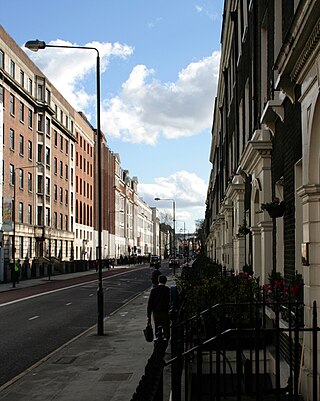
Gower Street is a two-way street in Bloomsbury, central London, running from Euston Road at the north to Montague Place in the south. The street continues as North Gower Street north of Euston Road, while to the south it becomes Bloomsbury Street.

The Royal Infirmary of Edinburgh (RIE), often known as the Edinburgh Royal Infirmary (ERI), was established in 1729 and is the oldest voluntary hospital in Scotland. The new buildings of 1879 were claimed to be the largest voluntary hospital in the United Kingdom, and later on, the Empire. The hospital moved to a new 900 bed site in 2003 in Little France. It is the site of clinical medicine teaching as well as a teaching hospital for the University of Edinburgh Medical School. In 1960, the first successful kidney transplant performed in the UK was at this hospital. In 1964, the world's first coronary care unit was established at the hospital. It is the only site for liver, pancreas and pancreatic islet cell transplantation and one of two sites for kidney transplantation in Scotland. In 2012, the Emergency Department had 113,000 patient attendances, the highest number in Scotland. It is managed by NHS Lothian.

Linlithgow is a town in West Lothian, Scotland. It was historically West Lothian's county town, reflected in the county's historical name of Linlithgowshire. An ancient town, it lies in the Central Belt on a historic route between Edinburgh and Falkirk beside Linlithgow Loch. The town is situated approximately 20 miles (32 km) west of Edinburgh.

Sir John Struthers MD FRCSE FRSE was the first Regius Professor of Anatomy at the University of Aberdeen. He was a dynamic teacher and administrator, transforming the status of the institutions in which he worked. He was equally passionate about anatomy, enthusiastically seeking out and dissecting the largest and finest specimens, including whales, and troubling his colleagues with his single-minded quest for money and space for his collection. His collection was donated to Surgeon's Hall in Edinburgh.

The National Museum of Scotland in Edinburgh, Scotland is a museum of Scottish history and culture.

NHS Lothian is one of the 14 regions of NHS Scotland. It provides healthcare services in the City of Edinburgh, East Lothian, Midlothian and West Lothian council areas. Its headquarters are at Waverley Gate, Edinburgh

General John Hope, 4th Earl of Hopetoun,, known as The Honourable John Hope from 1781 to 1814 and as Lord Niddry from 1814 to 1816, was a Scottish politician and British Army officer.
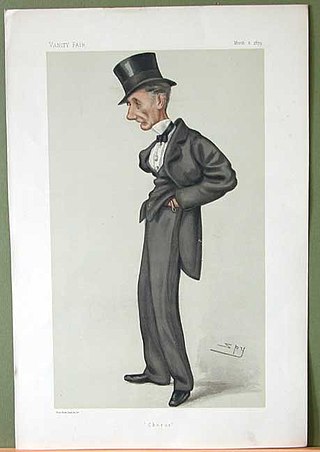
Admiral Sir William Edmonstone, 4th Baronet CB, DL, also 14th of Duntreath, was a British naval commander, courtier and Conservative politician.

Sir Godfrey Henry Oliver Palmer OBE is a Professor Emeritus in the School of Life Sciences at Heriot-Watt University in Edinburgh, Scotland, and a human rights activist.



















